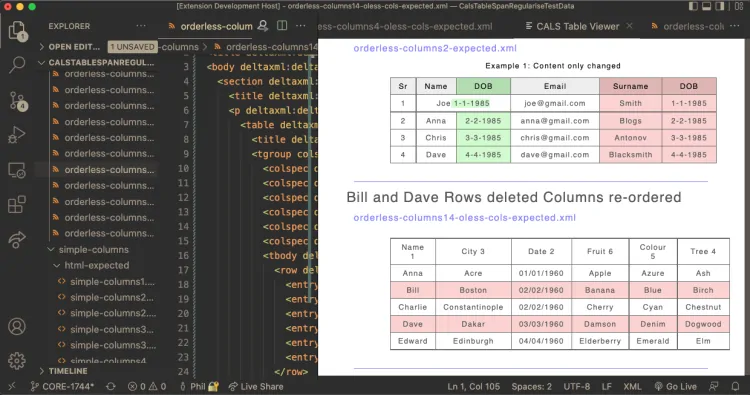How to display data in HTML using JavaScript?
XML is widely used because of its flexibility and readability. It is platform-independent and works well with different technologies. The ability to display XML data on a website increases the interactivity and functionality of web applications.
XML (Extensible Markup Language) is a popular format for storing and transporting structured data. Often, developers need to present this XML data dynamically on a website. Using JavaScript, you can easily parse, process, and display XML data in an HTML page.
XML (Extensible Markup Language) is a popular format for storing and transporting structured data. Often, developers need to present this XML data dynamically on a website. Using JavaScript, you can easily parse, process, and display XML data in an HTML page. This guide walks you through the steps to effectively implement XML data display on a website.
Why Use XML Data for Display?

By combining XML with JavaScript, you can extract and display meaningful information on your webpage.
Steps to Display XML Data on a Website Using JavaScriptTo display XML data in an HTML page, follow these steps:
Step 1: Prepare the XML DataXML data usually has hierarchical structures. Here's a simple example of XML data to demonstrate:
<books>
<book>
<title>JavaScript: The Good Parts</title>
<author>Douglas Crockford</author>
<year>2008</year>
</book>
<book>
<title>Learning XML</title>
<author>Erik T. Ray</author>
<year>2003</year>
</book>
</books>
Save this XML content in a file (e.g., books.xml) or embed it directly within your JavaScript.
Step 2: Create an HTML StructureSet up the HTML page where you want to display the XML data. Here's a basic structure:
<!DOCTYPE html>
<html lang="en">
<head>
<meta charset="UTF-8">
<meta name="viewport" content="width=device-width, initial-scale=1.0">
<title>XML Data Display</title>
<style>
table { width: 100%; border-collapse: collapse; } table, th, td { border: 1px solid black; } th, td { padding: 8px; text-align: left; }
</style>
</head>
<body>
< h1 > XML Data Display on Website </ h1 >
< table >
< thead >
<tr>
< th > Title </ th >
< th > Author </ th >
< th > Year </ th >
</tr>
</thead>
< tbody id = "xml-data" > </ tbody >
</ table >
< script src = "script.js" > </ script >
</body>
</html>
Step 3: Use JavaScript to Fetch and Parse XML DataJavaScript provides built-in methods for handling XML data.
You can use the XMLHttpRequest object or the modern Fetch API to retrieve XML from a file or server. Once retrieved, the XML is parsed and displayed dynamically.
Here's an example script ( script.js):
function loadXMLData () {
fetch ( 'books.xml' )
, then ( ( response ) => response. text ())
. then ( ( data ) => {
const parser = new DOMParser ();
const xmlDoc = parser. parseFromString (data, 'application/xml' );
const books = xmlDoc. getElementsByTagName ( 'book' );
const tableBody = document . getElementById ( 'xml-data' );
for ( let i = 0 ; i < books. length ; i++) {
const title = books[i]. getElementsByTagName ( 'title' )[ 0 ]. textContent ;
const author = books[i]. getElementsByTagName ( 'author' )[ 0 ]. textContent ;
const year = books[i]. getElementsByTagName ( 'year' )[ 0 ]. textContent;const row = document . createElement ( 'tr' );
row.innerHTML = `
<td> ${title} </td>
<td> ${author} </td>
<td> ${year} </td>
` ;
tableBody.appendChild (row) ;
,
,
.catch ( ( error ) = > {
console . error ( 'Error fetching XML data:' , error);
,
document . addEventListener ( 'DOMContentLoaded' , loadXMLData);
Best Practices for XML Data Display
- Validation: Ensure the XML data is well-formed before processing it.
- Error Handling: Handle cases where the XML file is unavailable or contains errors.
- Accessibility: Style your HTML to ensure it's accessible and mobile-friendly.
- Performance: Avoid unnecessary parsing for large XML files; use pagination if needed.
Conclusion
Displaying XML data on website using JavaScript is a practical way to present structured information dynamically. Whether fetching data from an external file or embedding it directly, JavaScript provides powerful tools for parsing and rendering XML. By following the steps outlined above, you can effectively implement XML data display on your website, creating an engaging and informative user experience.
What's Your Reaction?














